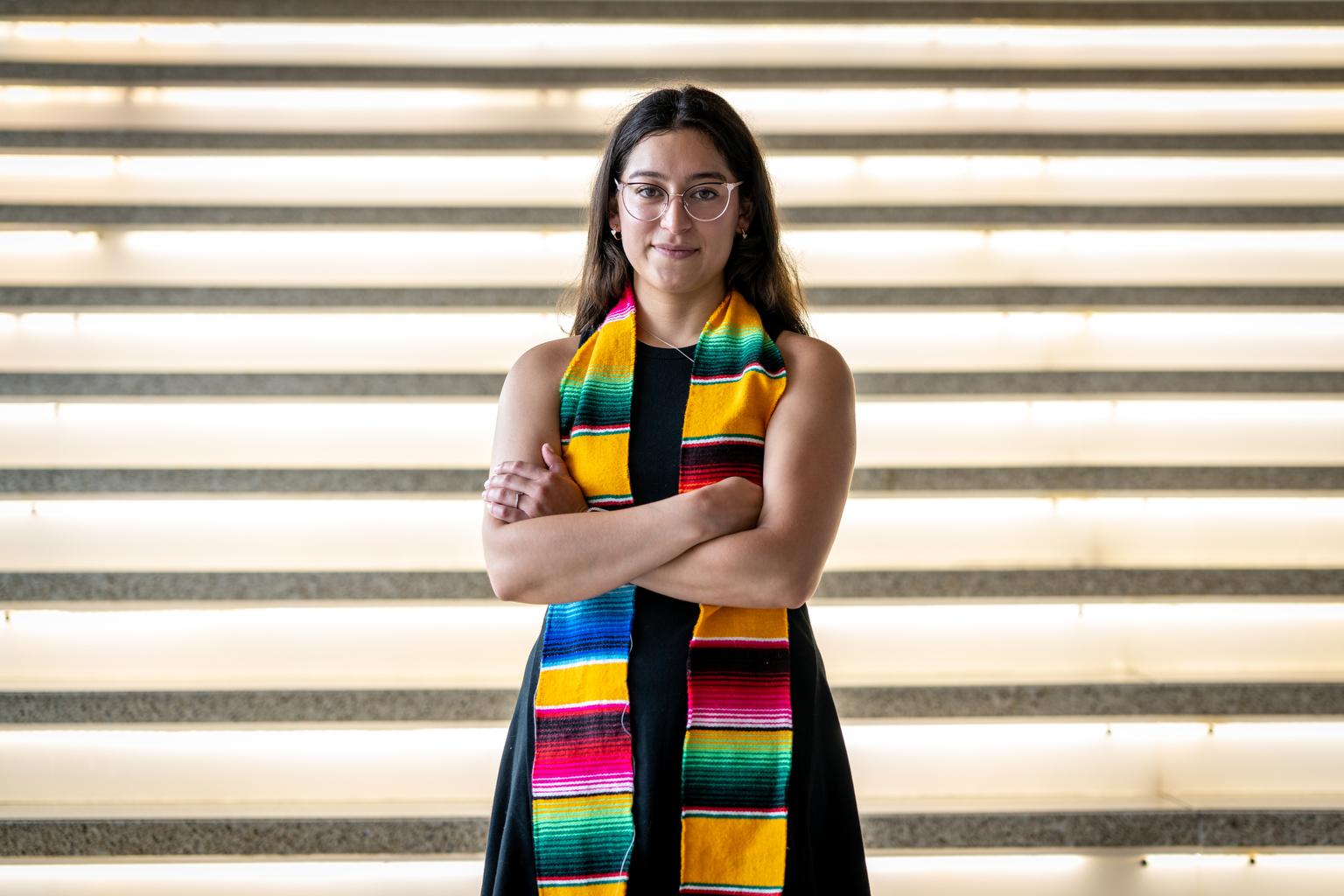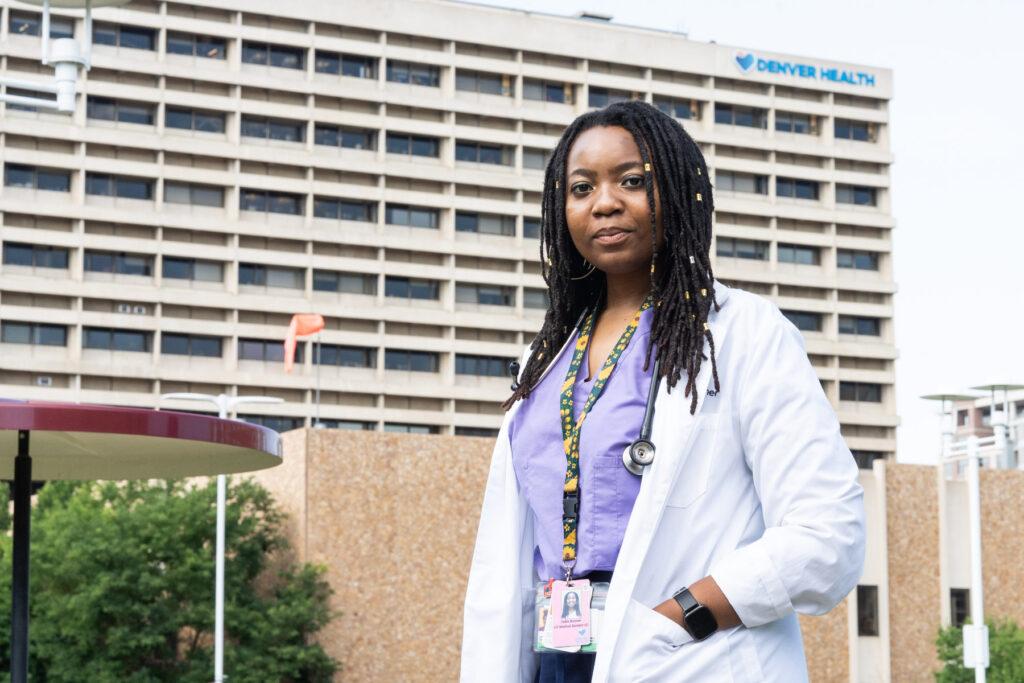
Earlier this summer, the U.S. Supreme Court ruled that race-conscious admissions in higher education, commonly known as affirmative action, is unconstitutional.
The full impacts of the decision won’t be fully understood until years down the road, when several classes of students go through college application processes. However, the stress over it is already there, especially among the medical community.
In a world without affirmative action, its absence will mostly be felt among the most selective programs in the nation. That includes medical schools, like Aurora’s University of Colorado Anschutz School of Medicine.
“We get 10,000 applications a year,” said Dr. Jeff SooHoo, who oversees admissions for the college. “There are thousands of people in that applicant pool that could successfully navigate our medical school, and that would be great physicians, but we have a class of 184.”
That equals a less than 2 percent chance of getting accepted if you send in an application. And for people from historically underserved communities, this process can be even harder. So the school has used affirmative action to level the playing field.
“We've never assigned points or any specific advantage per se, to those attributes,” SooHoo said. “Rather, we've used someone's background to contextualize what their opportunities have been … Recognizing that applicants that are underrepresented in medicine have some historical disadvantages that maybe have played out in their education or in their opportunities for research, volunteer work, leadership, things like that.”
Medical schools across the country have used affirmative action because the demographics of medical experts often don’t match the demographics of their clients. At CU Anschutz, minority students make up 32 percent of the student population, which includes pre-med undergraduates and nursing students.
Health inequities can be addressed by having more doctors of color
Dr. Ricardo Gonzalez-Fisher runs Ventanilla de Salud, a small clinic situated in the back corner of the Mexican consulate. As he spoke, the intercom would occasionally interrupt, beckoning Mexican immigrants to come forward to the front desk to submit passport documentation or car import requests.
“It is a program that is in every Mexican consulate in the United States, and some consulates in Canada and Central America,” Gonzalez-Fisher said. “This makes it the largest public health program for immigrants in the United States.”
Through the clinic, Gonzalez-Fisher advises Mexican immigrants on health issues, whether that’s navigating the American health care system, vaccinations, or screenings. He said the clinic sees anywhere between 12,000 to 17,000 people a year.
Gonzalez-Fisher said his work in the clinic helps bridge equity gaps among Latinos, a community with a historically low sense of trust in the medical system.
“We were screening for the knowledge about colorectal cancer screening, and we interviewed 70 people, one-on-one,” he said. “And it was very interesting to see that there's still this fatalistic idea about cancer, [like,] ‘If I have cancer, I'm going to die.’”
These kinds of health disparities and misconceptions are common among Gonzalez-Fisher’s patients. They became especially apparent during the height of the COVID-19 pandemic. State data shows Hispanic people have the lowest COVID-19 vaccination rate among ethnic groups with just over 50 percent, and that’s just for the first dose.
SooHoo said Anschutz wants to admit diverse students because of the positive impacts that more doctors of color would have on underserved communities.
“Patients from minority groups actually have better health outcomes when they're taken care of by someone that looks like them, that speaks their same native language, that comes from their neighborhood or socioeconomic group,” SooHoo said. “Those patients actually do better.”
Gonzalez-Fisher worries health crises will get worse as the full effects of the Supreme Court’s ban on affirmative action becomes clear.
“There's more Latino doctors retiring than Latinos coming into medical school,” Gonzalez-Fisher said.
Current and future medical professionals said they’re worried, too
For the Latino and other minority students trying to replace the retirees, the end of affirmative actions has made their paths a bit murkier.
It took a long time for Metropolitan State University of Denver senior Julianna Montoya to figure out what she wanted. A first-generation college student, Montoya initially wanted to go into sports journalism. Then, she realized her future was in the health care field. So, not knowing what to do, she became a nursing student.
“I realized, gosh, [nursing] isn't for me. This isn't what I want,” Montoya recalled. “From the beginning, I would've tailored my education to be a lot more condensed and to focus on the things that I'm passionate about and not be so focused on having to figure out all the puzzle pieces that come with academia and higher education.”
Montoya is now pursuing her undergraduate degree in public health and hopes to get a masters in public health to become a physician's assistant, which is a licensed medical professional who mostly works in primary care settings performing tasks like diagnosing illnesses, ordering lab tests, and prescribing medicine.
When she starts applying to graduate programs later this year, she’ll be among the first to undergo that process in a world without affirmative action.
“I, in my application, always told myself I would be well-rounded. I would represent every facet of my life, the things that are very important to me. And again, one of them being I am first generation, I am Latina,” she said. “To not be able to put that important piece on there that has defined a very fundamental part of me does worry me. I do worry about my chances moving forward. Are they going to see the whole picture of the person that they're going to be admitting to their program, who will go on to do great things in medicine?”

Current CU Anschutz medical student India Bonner also took her time. After an undergraduate career that spanned across three different Colorado universities, it took her two attempts to get admitted into medical school.
She worries the ruling against affirmative action will negatively impact future classes of medical students. She got into medicine because she felt unrepresented in health care settings.
“The Supreme Court's decision really took a lot of steps back because even with affirmative action, there was still a lack of diversity and now there's another barrier to people of color becoming physicians,” Bonner said.
There’s more to being a doctor than academic excellence
Both Bonner and Montoya spent some time finding their feet before committing to the health care profession. The goal was clearer to Dr. Prashanth Francis, a liver doctor and research scientist with the CU School of Medicine.
A first-generation Indian American, Francis always wanted to be a doctor. In high school, he ended up leaving early to enroll in a specialized academy for kids who wanted to pursue STEM careers.
Now, as an assistant professor and a former president of Anschutz’s Minority and Allied Resident Council, he sees the flaw in the logic that being the best academic mind is the only important thing for doctors to strive for.
“Now that I'm on the other side of medical training, I see the difference in what somebody who's on the front end trying to get into medical school thinks is valuable for the field of medicine and then what somebody who is actually practicing medicine finds to be valuable,” Francis said.
In describing what he values in medical students, Francis recalled one of the most popular television doctors of the 2000s. One who’s brilliant, but abrasive — to put it mildly.
“Medicine would absolutely collapse if everybody was like [Hugh Laurie’s character Gregory] ‘House M.D.’,” he said. “We really need people who can understand the science, can gather all the information, but who are excellent at establishing relationships with patients.”
SooHoo, the CU Anschutz admissions director, hopes students like Bonner and Montoya — who have otherwise stellar academic records and a desire to serve underrepresented communities — continue to apply to medical school. But with affirmative action gone, he’s worried a less competitive applicant pool will emerge.
“I would say to an applicant from any group that's qualified and ready to apply, that you should apply, be yourself,” SooHoo said. “It was never a single thing or a single check mark that got you into medical school, and it's not going to be in the future.”
Still, Gonzalez-Fisher said getting through medical school will be tough for those who do make it in, for the same reasons people of color needed affirmative action in the first place.
“Sometimes they don't have the opportunities to shadow their teachers or to participate in clinical research or things because they don't have time, because they have to work, they have to take care of a family. So it's going to be harder,” Gonzalez-Fisher said. “It's going to be harder, but we will find ways.”
Lawyers nationwide are reviewing the complete ruling to figure out how schools may move forward with their mission to admit diverse students while following the new SCOTUS ruling. The initial effect of the ruling is expected to start becoming apparent later this year, when college applications are due.









